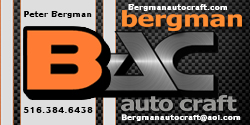Amata Bene
Well-Known Member
Hope everone had a good Thanksgiving.
Like the title says I know little to nothing about painting, most of my experience comes out of a rattle can. You can see in the pic what I'm going for. I just want a bright aluminum look not polished. I have decal the print shop made for the large flat area then a few coats of clear.

I painted painted the V-covers with a coat of self etching primer then 4 coats of Dupli-Color engine enamel with ceramic. This was a couple 3 weeks ago. Came to the shop today to get in some personal work while the sun was shinning and get home before 11++ pm. I thought all was going well till it wasn't. Started the sanding with 120 then 220 then final with 320. Notice on the first one the paint chipping/flaking off at the edges. Thought maybe the 320 was to aggressive to start so, I started the second one with 220 then the 320. Same thing.

What do I need to do to remedy this. Should I put them in the blast cabinet and start over with a different paint. Or, can I just use the same paint and do the sanding while it's a little soft not a 3-4 week cure time. Thanks for any advice.
Like the title says I know little to nothing about painting, most of my experience comes out of a rattle can. You can see in the pic what I'm going for. I just want a bright aluminum look not polished. I have decal the print shop made for the large flat area then a few coats of clear.
I painted painted the V-covers with a coat of self etching primer then 4 coats of Dupli-Color engine enamel with ceramic. This was a couple 3 weeks ago. Came to the shop today to get in some personal work while the sun was shinning and get home before 11++ pm. I thought all was going well till it wasn't. Started the sanding with 120 then 220 then final with 320. Notice on the first one the paint chipping/flaking off at the edges. Thought maybe the 320 was to aggressive to start so, I started the second one with 220 then the 320. Same thing.
What do I need to do to remedy this. Should I put them in the blast cabinet and start over with a different paint. Or, can I just use the same paint and do the sanding while it's a little soft not a 3-4 week cure time. Thanks for any advice.















